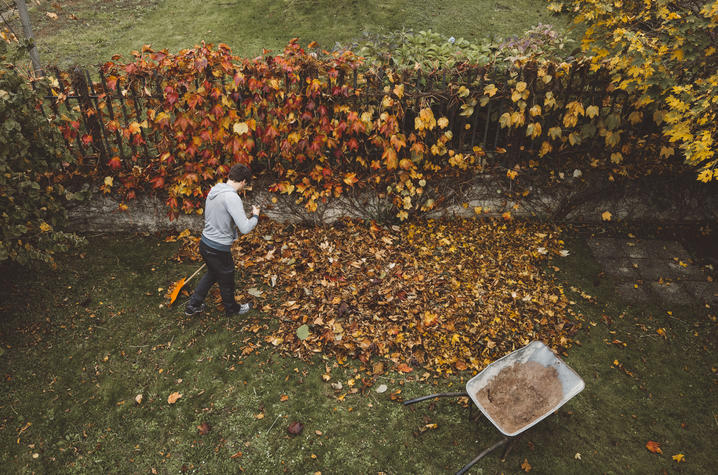Avoid eye injuries while doing yardwork this fall

The University of Kentucky Public Relations and Strategic Communications Office provides a weekly health column available for use and reprint by news media. This week’s column is by Andrew Pearson, M.D., UK HealthCare opthalmologist and chair of the UK Department of Ophthalmology and Visual Science.
LEXINGTON, Ky. (Sept. 16, 2024) - When the leaves start changing, we know fall is here, and with it an increase in yard work for many of us. That also means an increased risk of eye injuries. Eye injuries can result from various types of yard work in the fall, but there are ways to reduce risks.
Risk factors that increase the likeliness of outdoor eye injuries
Using equipment like leaf blowers, weed whackers and mowers can cause small projectiles to land in your eye; the use of lawn chemicals means a risk of the products getting splashed into your eye. These all increase the likeliness of eye injuries or even blindness. The biggest risk factor is failure to wear proper eye protection. When in doubt, stop, go back to the house and get safety glasses.
Protective eyewear
You can purchase safety glasses at a home improvement store. If you need a prescription, talk to your eye care provider about protective prescription eyewear.
Symptoms of eye Injuries
- Pain: After an injury you may experience light discomfort or a sharp, or even throbbing pain.
- Swelling: You may experience eye swelling involving redness, puffiness and an enlarged appearance of the eyelids or surrounding areas
- Bruising: Bruising in the tissue around the eye is a common symptom of an eye injury.
- Problems with eye movement: Not being able to easily move your eyes.
- Bleeding: The white part surrounding your eye may be red, which is a sign an eye injury has occurred.
- Change in vision: You may experience blurred vision or see flashes of lights.
- Light sensitivity: You may experience intolerance to light that causes pain or discomfort.
When to seek medical attention for an eye injury
Seeking medical attention sooner rather than later is one of the best predictors of outcomes when an eye injury has occurred. Seeking help right after an eye injury decreases the likelihood of major complications. UK HealthCare’s Emergency Department is the only emergency department in the region with 24/7 opthalmology coverage, meaning you can be seen right away by an eye care expert when you come in with an injury.
UK HealthCare is the hospitals and clinics of the University of Kentucky. But it is so much more. It is more than 10,000 dedicated health care professionals committed to providing advanced subspecialty care for the most critically injured and ill patients from the Commonwealth and beyond. It also is the home of the state’s only National Cancer Institute (NCI)-designated Comprehensive Cancer Center, a Level IV Neonatal Intensive Care Unit that cares for the tiniest and sickest newborns and the region’s only Level 1 trauma center.
As an academic research institution, we are continuously pursuing the next generation of cures, treatments, protocols and policies. Our discoveries have the potential to change what’s medically possible within our lifetimes. Our educators and thought leaders are transforming the health care landscape as our six health professions colleges teach the next generation of doctors, nurses, pharmacists and other health care professionals, spreading the highest standards of care. UK HealthCare is the power of advanced medicine committed to creating a healthier Kentucky, now and for generations to come.




